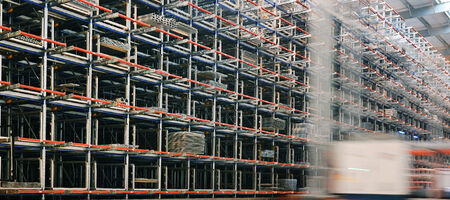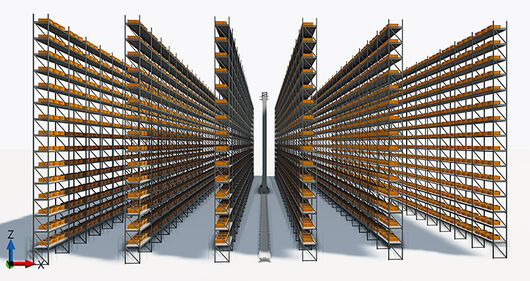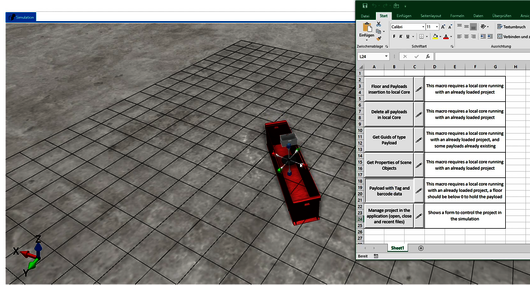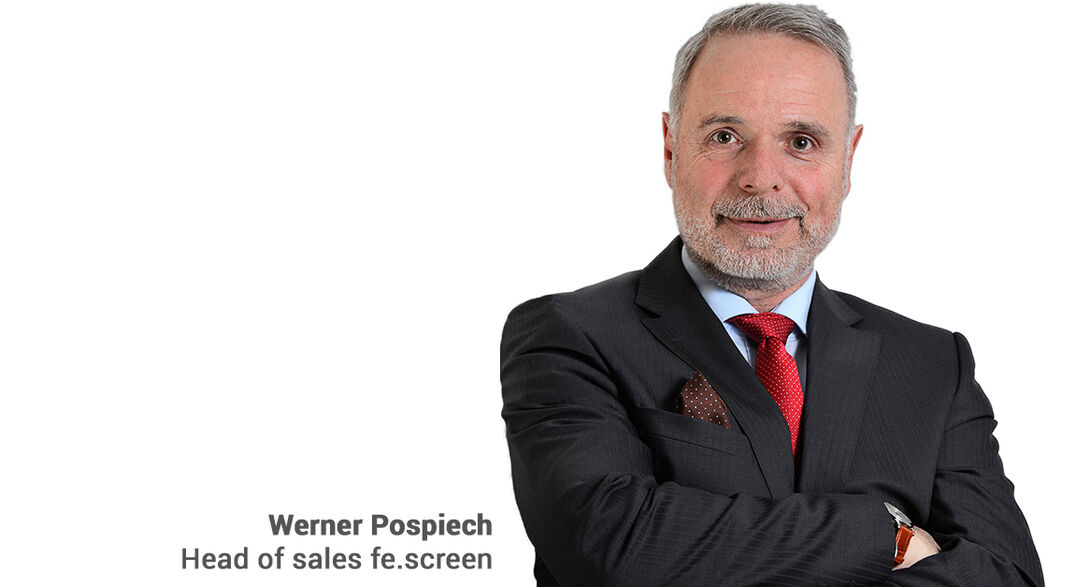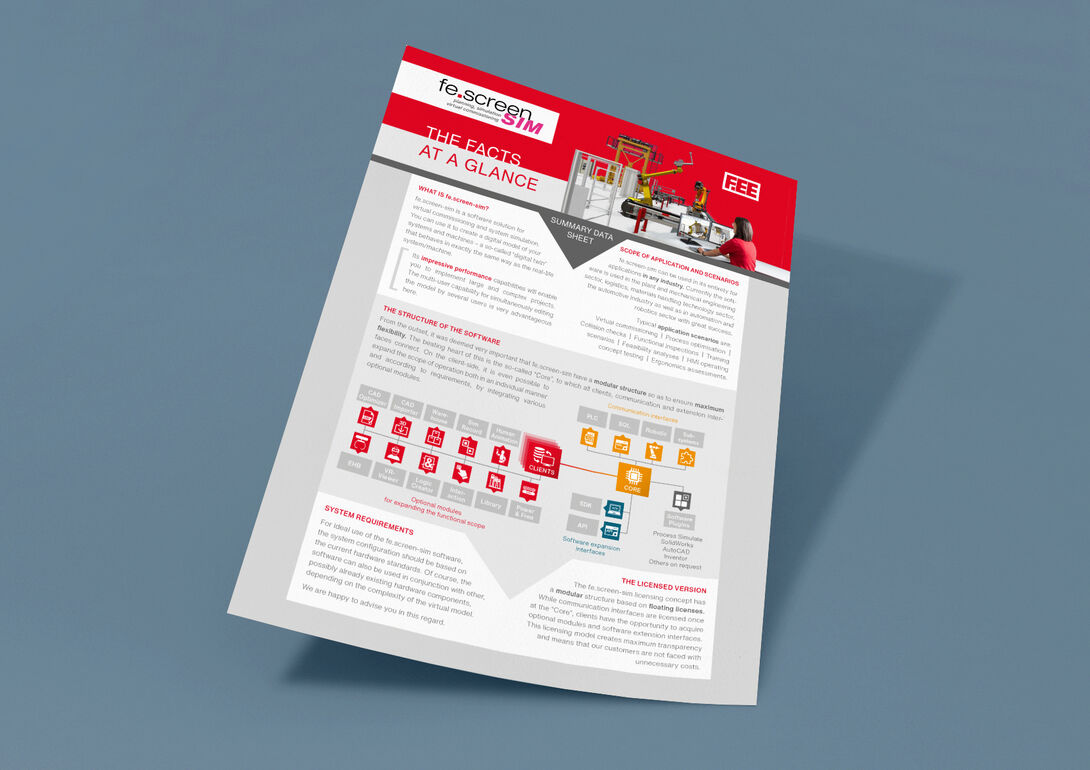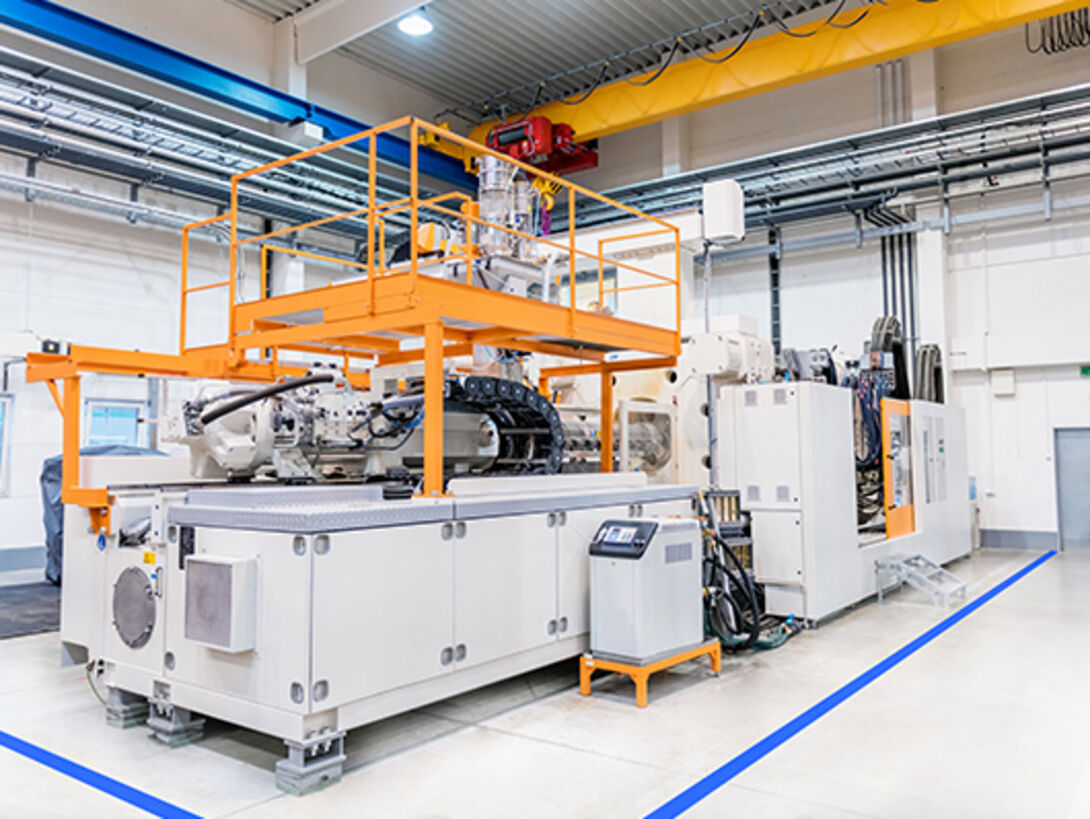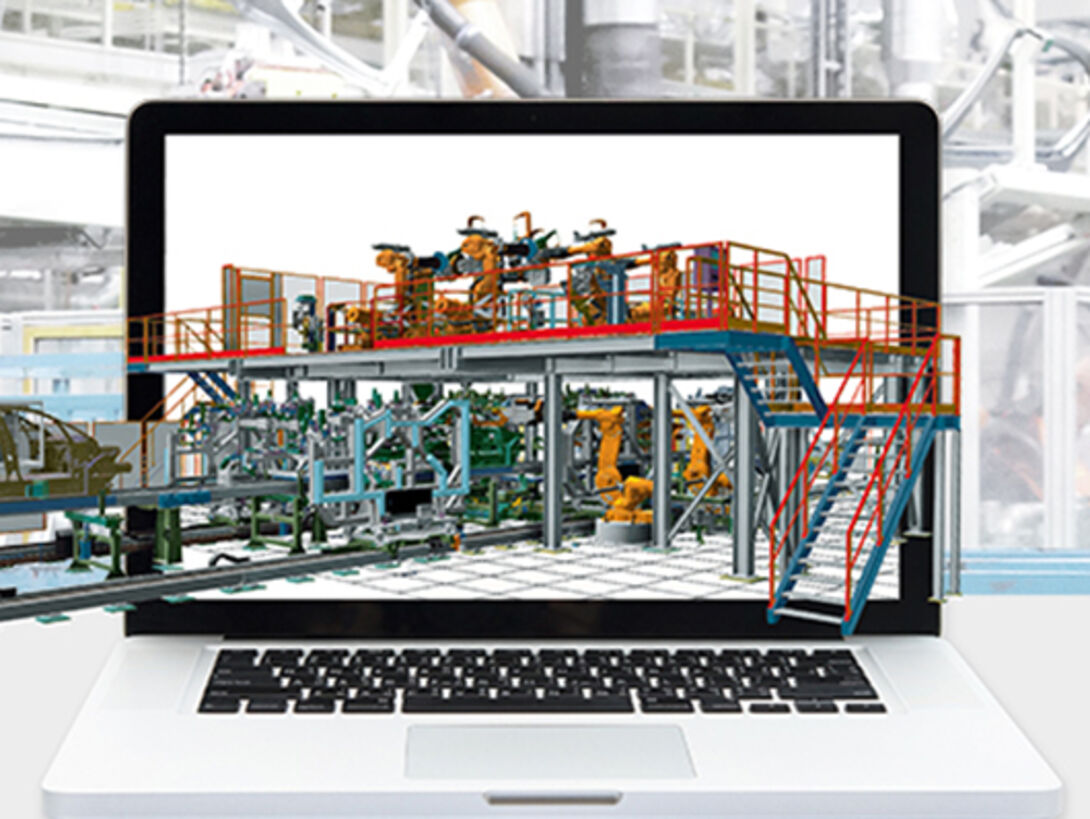Use in the field of logistics
Without smoothly functioning logistics processes, efficient production in today's companies would not be possible. This makes it all the more important to have perfect planning by means of simulation of new plants or conversions with regard to all components in terms of conveyor technology, automatic warehouses and driverless transport systems. With virtual commissioning, even the most ambitious project plans can be realized here, because sources of error and inefficiency can be eliminated at an early stage of planning.
Due to the high degree of automation and the increasing variety of products, ever more complex storage systems are required. This makes it all the more important to simulate storage, retrieval and relocation processes as well as various warehouse variants at an early stage in conjunction with the control technology in a clear manner in real time. This is where fe.screen-sim shows its performance strengths – warehouse and logistics simulations with more than 100,000 storage spaces have already been successfully implemented with the software. This makes fe.screen-sim ideally suited for the design of storage capacity and storage strategy as well as for optimisation purposes.
The requirements in logistics can be very diverse and place corresponding demands on a simulation solution:
- Simple, uncomplicated setup of simulations based on existing 2D layouts.
- Validation of the plant behaviour, e.g. during full and empty runs of storage areas.
- Simple connection to warehouse management systems and material flow computers, including inward and outward transfer of components with triggers and data from these systems.
- Combination of different PLC manufacturers in one system and processing of signals with more than 10,000 inputs/outputs.
- Possibility of simulation of different mixed systems (e.g. EHB, EFS, FTS, RBG, floor conveyor systems).
- Automated assignment of PLC variables to the simulation model (assignment scripts, drag/drop, graphical assignment, generation via API or SDK interface).
- Extremely high performance with regard to the number of possible simulation elements (warehouses with more than 5 million storage locations, conveyor systems with more than 5,000 conveyors).
SOLUTIONS – HERE THE SIMULATION CAN BE USED IN INTRALOGISTICS
- Automatic storage systems
- Accumulating conveyor
- Fast conveyor
- Storage and retrieval machines
- Sorting plants
- Input and transfer stations
- Converter
- Commissioning facilities
- Container conveyor
- Pallet conveyor
- Palletizing systems
- General cargo stacking systems
- Electric monorail systems
- Electric floor systems
- Automated guided vehicle systems
Especially in logistics, a cycle time analysis in the planning process is an important factor for the concrete dimensioning of the plant. Here, fe.screen-sim offers a perfect combination with tools that are specifically designed for throughput and cycle time analysis. The advantage is that existing models that have been built for analysis can also be used for simulation under certain conditions. In this case, fe.screen-sim offers a wide range of options for implementing this, for example, via the integrated Software Development Kit (SDK).
Simulation in video: Intralogistics example plants
Simple object generation
In principle, a model can be generated on the basis of existing layouts. This can also be done automatically. For example, the elements can be analyzed in the CAD program and automatically generated in fe.screen-sim via an interface. This reduces the creation effort considerably, especially because the model does not have to be built up again. The generation of plant models from external data sources, such as Visio, Excel, etc. is possible, as well as a purely manual setup based on the plant layout.
The goal and philosophy of fe.screen-sim is to build as much as possible automatically.
Saving time by using a simulation for intralogistics
Plant simulation and virtual commissioning offer potential for significant cost reductions in new projects or conversions. For example, time-consuming troubleshooting during the commissioning of control and automation technology in the late phase of your project is no longer necessary.
Your personal contact person – for more clearness
You are a project or department manager and are faced with the question of how to set up a digital twin for your project? We would be happy to talk to you personally about your requirements, the time frame, the possible project approach and give you an initial cost estimate.

